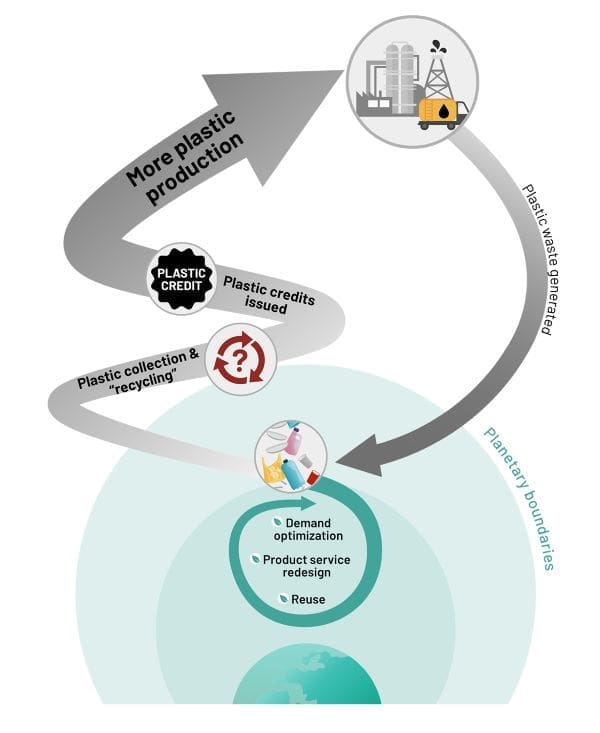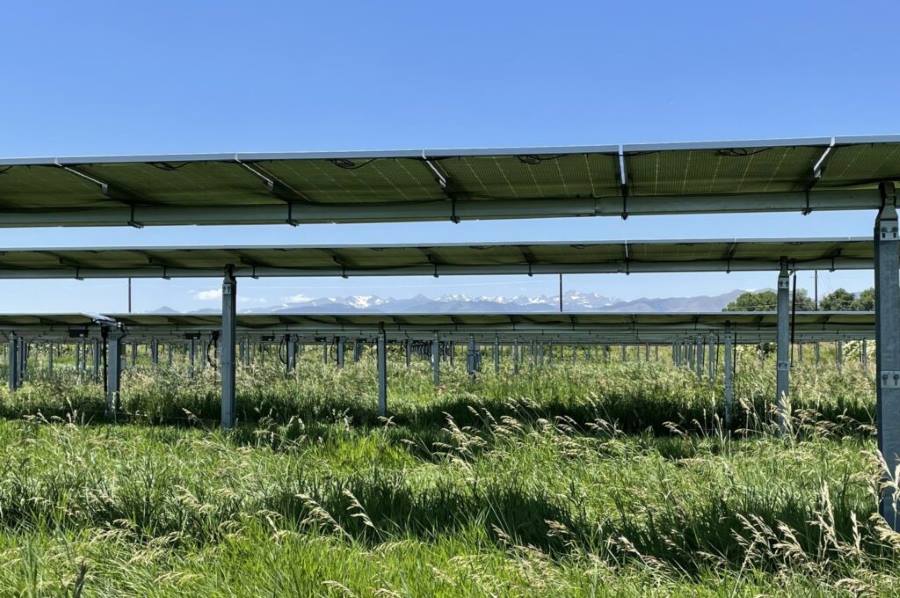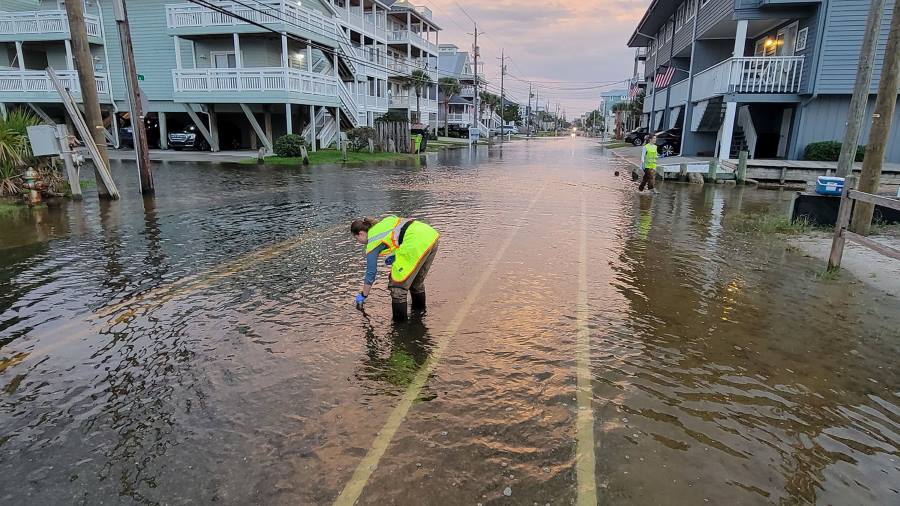Explore the latest insights from top science journals in the Muser Press daily roundup (June 3, 2025), featuring impactful research on climate change challenges.
In brief:
Plastic credits may worsen plastic problem
The world produces more than 460 million tons of plastic every year. Plastics are made from a wide variety of chemicals and polymers that are almost exclusively derived from fossil fuels. When they end up in the environment, they can cause lasting damage to us humans, the climate and our ecosystems. Plastics can now be found in even the remotest parts of our planet and throughout the human body. One approach currently being advocated as a way out of the crisis is plastic credits.
An international consortium of experts, led by Sangcheol Moon of the University of California Berkeley and including Melanie Bergmann from the Alfred Wegener Institute, shows in the journal One Earth that offsetting schemes such as plastic credits are far from being a solution. They could even exacerbate the crisis.

As countries worldwide seek to tackle the social, political and economic impacts of plastic pollution, plastic credits have gained traction as a potential tool. “Plastic credits are typically allocated for every ton of plastic that is retrieved from the environment or waste stream,” explains Dr. Melanie Bergmann from the Alfred Wegener Institute, Helmholtz Centre for Polar and Marine Research (AWI) and co-author. The AWI biologist and other authors are part of the ‘Scientists Coalition for an Effective Plastics Treaty’.
The international network of independent experts supports the United Nations’ negotiations for a binding treaty that limits plastic pollution. “During the negotiations, plastic credits are promoted as a new type of financing and control measure,“ says Melanie Bergmann. “However, our peer-reviewed article highlights that plastic credits are not an appropriate approach to reducing plastic pollution or to financing reduction efforts.” Worse, they can create loopholes and even undermine efforts to reduce plastics by facilitating business-as-usual production growth, which is on track to triple by 2060. Greenhouse gas emissions could rise from the current level of 5.3 percent of the annual CO2 emissions to use up 30 percent of the remaining budget by 2030.
“Plastic credits are a false solution that can enable greenwashing while potentially sidestepping transparency and accountability,” says Prof. Andrea Bonisoli-Alquati, an Associate Professor of Environmental Toxicology at California State Polytechnic University, Pomona, and co-author. “If we’re serious about ending plastic pollution, we must stop pretending we can offset harm and instead limit production and require companies to internalize the social costs of plastic pollution, by fully applying the polluter-pays principle.”

A ton does not equal a ton
The idea is not new; plastic credits are modeled on carbon credits. “They also share many of the same failings as carbon offset credits,“ says Sangcheol Moon, an environmental researcher at the University of California, Berkeley, and lead author of the study. “Projects often credit activities that would have occurred without the credit, and allow disposal pathways with varying degrees of reversal risks. In some cases, plastic credit systems have led to health harms in nearby communities and co-opted informal waste work without meaningful safeguards.“
The calculation of plastic credits is based on the premise that one ton of plastic waste that is removed or recycled equals one ton in the “plastic footprint” – a concept that is not universally agreed upon and can vary significantly across contexts.
However, this “one ton equals one ton” fails to capture the complexity of plastics: “This approach overlooks the enormous diversity in the composition of plastics and the resulting environmental and health impacts,“ says Sangcheol Moon. “Unlike greenhouse gas emissions – where a standardized metric like global warming potential, expressed in CO2-equivalent is scientifically accepted because most greenhouse gases are well-mixed in the atmosphere and their climate impact does not vary significantly by source or location – there is no universal metric for plastic pollution.”
Plastics differ widely in toxicity, recyclability, and socioeconomic impacts, thus a ton of clear, highly recyclable PET bottles cannot be equated with a ton of non-recyclable packaging made from multilayer materials and different sets of chemical additives. This flawed equivalence calls into question the logic of offsetting with plastic credits, since equal weight does not imply equal impact in the case of plastics.
About the global negotiations for a binding UN plastics treaty
Since 2022, delegates from all 193 UN member states as well as representatives from science, civil society and business have been meeting to draft a legally binding agreement (UN Plastics Treaty) to reduce plastic pollution. The original negotiation timeline has been extended, with the next round of negotiations taking place in Geneva from August 5 to 14, 2025.
Journal Reference:
Sangcheol Moon, Neil Tangri, Andrea Bonisoli-Alquati, Rob Ralston, Melanie Bergmann, et al., ‘Unpacking plastic credits: Challenges to effective and just global plastics governance’, One Earth 8, 5, 101303 (2025). DOI: 10.1016/j.oneear.2025.101303. Also available on ScienceDirect.
Article Source:
Press Release/Material by Alfred Wegener Institute, Helmholtz Centre for Polar and Marine Research (AWI)
Research shows how solar arrays can aid grasslands during drought
New research from Colorado State University and Cornell University shows that the presence of solar panels in Colorado’s grasslands may reduce water stress, improve soil moisture levels and – particularly during dry years – increase plant growth by about 20% or more compared to open fields.
The findings were published in Environmental Research Letters this week. The paper outlines the potential benefits and challenges when photovoltaic (PV) arrays are located in grassland ecosystems. The findings are particularly relevant when considering drought in the arid west and the potential for future climate change.
While solar power systems are a key source of renewable energy, they reduce the amount of sunlight available for plant growth, which could impact these complex ecosystems in ways that reduce the wildlife they support, the carbon they store and the amount of forage they produce for livestock grazing. The work, based on four years of data from an agrivoltaics solar facility in Longmont, Colorado, represents the first effort to field test how co-locating solar and grasslands changes those dynamics.

Colorado’s semi-arid grasslands often need more water than is available through precipitation in each season.
The team found that plants beneath and around the solar systems in that environment benefited from partial shading and additional water that collects on panels – aiding in their fight to survive during the harsh summer months. They found that during a dry year, grass growth on the east side of panels was up to 90% more productive in some cases than the neighboring open site. During wet and normal years, this positive grass production response was reduced, but the east side of the panels still saw more grass production than the control site.
Cornell Postdoctoral Research Associate Matthew Sturchio is an author on the paper along with CSU University Distinguished Professor Alan Knapp. Sturchio was previously part of Knapp’s team in the Department of Biology, and he is still an affiliated researcher at CSU.
Sturchio said the results demonstrate the potential of solar land use synergies in grasslands that support both needed renewable power generation and ecosystem stability.
“There have been several studies reporting improved plant and water relations from solar arrays,” he said. “However, this is the first analysis that shows how that pattern becomes more pronounced with increasing aridity or dryness like we see in Colorado.
“The most important takeaway here is that even though this solar array was designed to maximize energy generation – not to promote beneficial environmental conditions for the grasses grown beneath – it still provided a more favorable environment during a dry year.”
Sturchio said those gains could increase if panels were instead designed to maximize their benefits depending on conditions. That may include changing their position to provide shade when air temperatures rise or configuring them to let more light in during key parts of the growing season.
“With small changes in array design, configuration and management, we may even realize untapped benefits, particularly those related to water use,” he said.
The paper is part of ongoing research by the pair into agrivoltaics: a dual use approach where solar power infrastructure is designed and placed to also support livestock grazing or pollinator habitats in parallel. Those agricultural options don’t require irrigation or machinery. However, because of their heavy reliance on rain to support plant growth, research like this is needed to understand how the addition of panels changes the environment overall.
Knapp and his lab have been studying grasslands at CSU for decades, focusing primarily on how they cope with chronic water stress and drought. He said research in the paper focuses on perennial C3, “cool season” grasses that prefer wetter conditions. The next step will be to study the more common C4 grasses found in the plains of Colorado. Those plants flourish in warmer conditions with lots of sunlight.
“Those grasslands are even more water-limited than the ones we used in this study. Thus, we expect the capability of solar arrays to mitigate water stress may be even greater,” Knapp said.
Sturchio added that solar panels may even provide an opportunity to restore grassland ecosystems by promoting diverse plant communities. He said building solar facilities in ecosystems that could benefit from their strategic placement is an obvious win-win.
“We hypothesize that grassland restoration in arid and semi-arid regions could benefit not only from the favorable conditions in solar arrays, but also from the environmental heterogeneity created by panels,” he said. “We are excited to test the functional underpinnings of that idea at the newly constructed Shortgrass Ecovoltaic Research Facility in Nunn, Colorado, very soon.”
Journal Reference:
Matthew A Sturchio and Alan K Knapp, ‘Evidence of photovoltaic aridity mitigation in semi-arid grasslands’, Environmental Research Letters 20, 064047 (2025). DOI: 10.1088/1748-9326/add94d
Article Source:
Press Release/Material by Josh Rhoten | Colorado State University
Study finds coastal flooding more frequent than previously thought
Flooding in coastal communities is happening far more often than previously thought, according to a new study from North Carolina State University and the University of North Carolina at Chapel Hill. The study also found major flaws with the widely used approach of using marine water level data to capture instances of flooding.
“Government agencies and researchers use data from tide gauges to measure water levels in coastal areas, then use that data to estimate flood frequency in the region,” says Miyuki Hino, corresponding author of a paper on the study and assistant professor of city and regional planning at UNC. “Those estimates are used both to assess how often flooding has taken place and to predict how often flooding may take place in the future. However, our study shows that this approach does not accurately capture how often flooding takes place or how long those floods last.”
“Due to sea-level rise, we’re now seeing flooding in coastal areas outside of extreme storms like hurricanes,” says Katherine Anarde, co-author of the paper and an assistant professor of coastal engineering at NC State. “There can be flooding during everyday rain showers or at high tide on sunny days. It’s important that the methodology we use to monitor and predict flooding reflects this reality, since sea-level rise means these flooding events are going to become even more common.
“Our research shows you need land-based measures of flooding to capture the burden on coastal residents, which can inform policy and planning decisions moving forward,” Anarde says.

Anarde and Hino are part of the Sunny Day Flooding Project, a research initiative focused on improving flood monitoring, broadening our understanding of coastal flooding, and identifying the most effective flood mitigation strategies.
At present, there are two widely accepted “thresholds” used to infer flooding on land based on tide gauge data: the National Oceanic and Atmospheric Administration (NOAA) High Tide Flooding threshold (HTF) and the National Weather Service’s minor flood threshold (NWS).
For this study, the researchers made use of data from a network of land-based sensors that their team designed to identify flooded roadways and deployed across eastern North Carolina. The researchers focused on a year of data from sensors in three communities: Beaufort, Carolina Beach and Sea Level.
During the study period, the sensors detected flooding on 26 days in Beaufort, 65 days in Carolina Beach and 128 days in Sea Level.
“These numbers were very different from what the HTF and NWS thresholds tell us based on water levels at tide gauges,” Anarde says. “In general, the thresholds drastically underestimated the number of floods. For example, when you subtract floods associated with extreme storms, we recorded flooding on 122 days in Sea Level. But if you looked at the data from the closest tidal gauge, the NWS threshold inferred that there were 31 days of flooding. And the HTF threshold inferred only nine days of flooding.
“However, the NWS threshold sometimes overestimates the number of flood days,” Anarde says. “For example, Carolina Beach had 65 days of flooding, but if you applied the NWS threshold using data from the closest tidal gauge, it inferred that there were 120 days of flooding.”
“In addition to being inaccurate in terms of how often it is flooding, our findings also show that the actual duration of the floods is longer than is captured by the HTF and NWF thresholds,” Hino says. “Essentially, the thresholds don’t adequately account for how long it takes water to drain off of land.”
“More accurate information on coastal flooding can inform where and how we invest resources in building more resilient communities,” says Anarde. “It’s hard to design an efficient solution when you don’t know the scope of the problem.”
Anarde and Hino are now working with partner communities to identify and evaluate response strategies that can mitigate the impacts of chronic flooding.
“Every community is unique, so there’s no one-size-fits-all solution,” says Hino. “But with more accurate data, we can help communities assess what response strategy is best for them, now and in the future.”
The paper, ‘Land-based Sensors Reveal High Frequency of Coastal Flooding’, is published in the open-access journal Communications Earth & Environment. The paper was co-authored by Ryan McCune and Thomas Thelen, Ph.D. students at NC State; Elizabeth Farquhar, a research associate at NC State; Perri Woodard, an undergraduate student at NC State; Tessa Fridell, a former undergraduate student at UNC; and Anthony Whipple, a research technician at UNC.
Journal Reference:
Hino, M., Anarde, K., Fridell, T. et al., ‘Land-based sensors reveal high frequency of coastal flooding’, Communications Earth & Environment 6, 404 (2025). DOI: 10.1038/s43247-025-02326-w
Article Source:
Press Release/Material by Matt Shipman | North Carolina State University
Ocean microbes offer clues to environmental resilience
Researchers at the University of Colorado Boulder and Oak Ridge National Laboratory have developed a new way to identify genetic changes that help tiny oxygen-producing microbes survive in extreme environments. The findings outline a new experimental approach for learning how microbes and other types of cells, including human cells, respond and adapt to environmental stress.
Their research, published in the Proceedings of the National Academy of Sciences, will also help scientists engineer faster-growing synthetic strains of microbes that could be used to develop new bio-derived fuels, chemicals and materials.
The multidisciplinary group of engineers and biochemists used a gene silencing system called CRISPR interference (CRISPRi) to turn down the activity of every gene in the genome of Synechococcus sp. PCC 7002, an ocean-dwelling cyanobacteria species. Cyanobacteria perform photosynthesis, much like plants.

“Because these organisms produce a large share of the Earth’s oxygen, understanding how they respond to a changing climate is critical,” said Andrew Hren, a PhD student in the Fox Group and the paper’s first author.
The team explored how cyanobacteria responded to different light and temperature conditions found at various ocean depths. They discovered that making small changes in how certain genes are turned on or off can help the cells adapt better to extreme environmental conditions like heat, cold or drought.
“Our work shows how small genetic changes can yield large improvements in fitness when we push microbes to the edge of their comfort zone,” said Jerome Fox, an associate professor of chemical and biological engineering at the University of Colorado Boulder and a co-lead author on the study with Carrie Eckert at ORNL, a former senior scientist fellow in the Renewable and Sustainable Energy Institute (RASEI). “Our findings also highlight the value of using CRISPRi to turn the activity of genes down, but not off, as intermediate adjustments tended to provide the greatest survival advantage in extreme conditions.”
The work was inspired by the late Jeff Cameron, an associate professor in the Department of Biochemistry and fellow at RASEI, Fox said.
“Jeff’s enthusiasm for cyanobacteria was infectious,” Fox added. “He taught us everything we know and served as a critical resource on experimental design.”
The researchers plan to continue studying cyanobacteria to further understand how the microbes absorb light and convert it into energy to develop new technologies — such as engineered microbes that produce renewable chemicals and other useful products.
Journal Reference:
A. Hren, N. Lollini, D.L. Carper, P.E. Abraham, J.C. Cameron, J.M. Fox & C.A. Eckert, ‘High-density CRISPRi screens reveal diverse routes to improved acclimation in cyanobacteria’, Proceedings of the National Academy of Sciences U.S.A. 122 (12) e2412625122 (2025). DOI: 10.1073/pnas.2412625122
Article Source:
Press Release/Material by Susan Glairon | University of Colorado at Boulder
Featured image credit: Gerd Altmann | Pixabay




